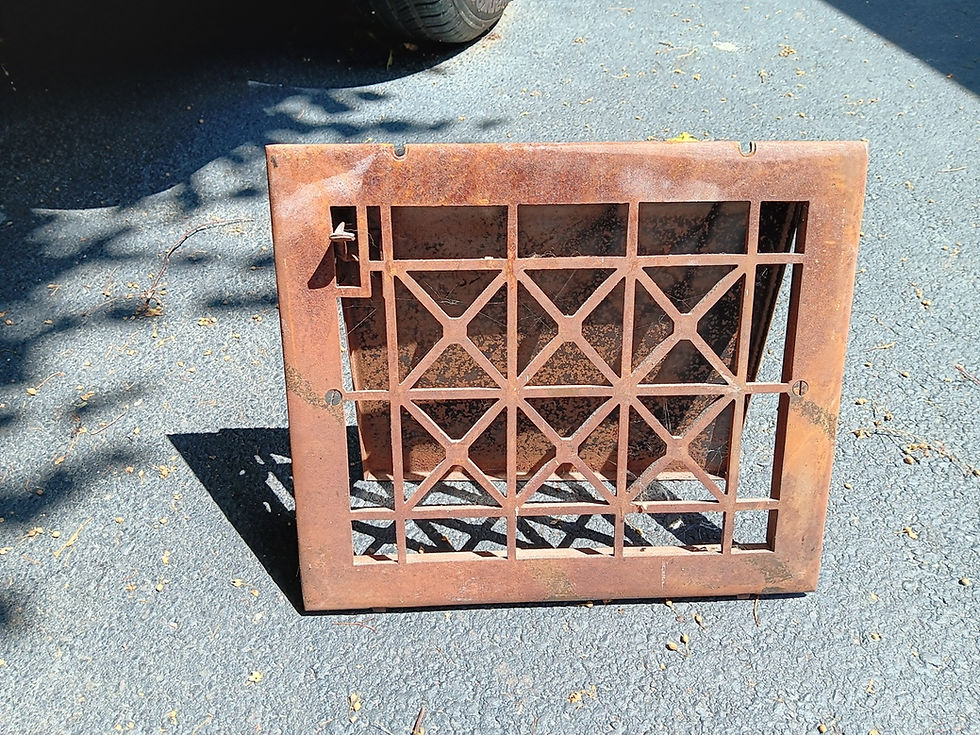Ideas from Ed: A short circuit lesson
- LCP4P

- Jan 1, 2020
- 3 min read
Updated: Nov 23, 2020
“Ideas from Ed” (January 2020)
Ed is a do-it-yourselfer who is happy to share some of his ideas and experiences in this monthly column.
This month: A short circuit lesson
Everybody needs to be comfortable and (especially) safe around electricity. We all should know not to run extension cords under rugs, to avoid using thumbtacks to hold wiring in place, and to use grounded outlets where possible. We even know to turn off the power via the fusebox or breaker panel when servicing an outlet or appliance. One of the basic things that most folks don’t keep track of, however, is just “what” is on “which” circuit. This is very important when adding outlets, for example, so that the particular circuit is not overtaxed by the current draw on it. It’s even more critical when trouble-shooting an issue, like no power at a particular location. To cut to the chase, this month’s short and sweet article is simply a recommendation that time be spent “mapping” the circuitry, and identifying everything on each one. Here is a picture showing some that I’ve made:

Here’s an enlargement of a section of each, easier to read, and slightly updated from the dated picture above:
Main room
5 porcelain ceiling lights except 1 over laundry tub, plus switches, Breaker #3
furnace Breaker #6
GFCI at laundry tub Breaker #7
wall outlet below hanging wall clock Breaker #9
3-way switches at top/bottom of steps and overhead light Breaker #10
overhead porcelain light at laundry tub Breaker #11
west wall outlet between high windows Breaker #18
clothes dryer outlet Breakers #37/39
Breaker #3
5 basement porcelain ceiling lights except one over laundry tub, plus 2 3-way switches
basement wall outlet, south wall @ window
Note that the listing is done 2 ways, by breaker and by location. So, if I want to replace the south wall outlet by the window in the main basement room, using the information above you can see that the outlet is on circuit #3. Next, I would look at the “by breaker” listing to see what else will be affected should I turn off that circuit. The only other things that would be affected are 5 basement porcelain ceiling lights and their switches. I would not have to worry about disrupting any clocks, timers, security systems, refrigerators, or anything else that would be unhappy with a loss of power. I find this setup EXTREMELY useful, as long as it’s accurate, complete, and kept up-to-date. It would be even better (and I’m doing this with my updates) to note whether it’s a 15 or 20 ampere circuit.
Of particular value is knowing which connections might be “downstream” from a GFCI (ground fault circuit interrupter). When an outlet in a bedroom stops working, for example, it’s entirely possible that it’s because a GFCI somewhere else controls that outlet and has tripped.
How do you actually MAKE the circuit map? Obviously, if there are 2 people, one can turn breakers on and off while the other watches things like lamps. Then, using a strong yell, a stomp on the floor, a walkie-talkie, cell phone, or other means of communication, messages between the end location and the circuit panel could be shared and circuits noted.
A slightly modified way of mapping, enabling one person to do it, is to plug in a loud radio so that at the breaker panel it can be heard (or not!) as circuits are tested. The downside is that it is time-consuming, and involves a lot of trips between the two locations. If you’re doing it this way, take your time and maybe map one room or one floor at a time. Remember, this is not a time-sensitive project, so if you complete it next week or next month, the results will be the same. A more high-tech method is to use an electronic means of tracing things, like this one that I use:

Remember, I’m not endorsing any particular brand or product, but am simply showing you what I have. With a setup like this, there’s a “sender” that plugs in at any location, and a receiver that you use to “scan” the breaker panel. It emits a sound or a light to indicate when the receiver is adjacent to the correct circuit. Nicer than a loud radio, but you’ll still need to go back and forth between the panel and the test location to move the sender from spot to spot. In any case, I’m hoping that you’ll see value in this somewhat different “how-to” article, and do your own circuit mapping. If nothing else, it will impress everyone that sees it, and might even be invaluable down the road should you sell your house, and the new owner tries to figure out “what that mysterious switch” turns on, or why a plugged-in lamp won’t light.
I hope all your projects go well. Thanks for reading, and happy restoring!
Ed




Comments